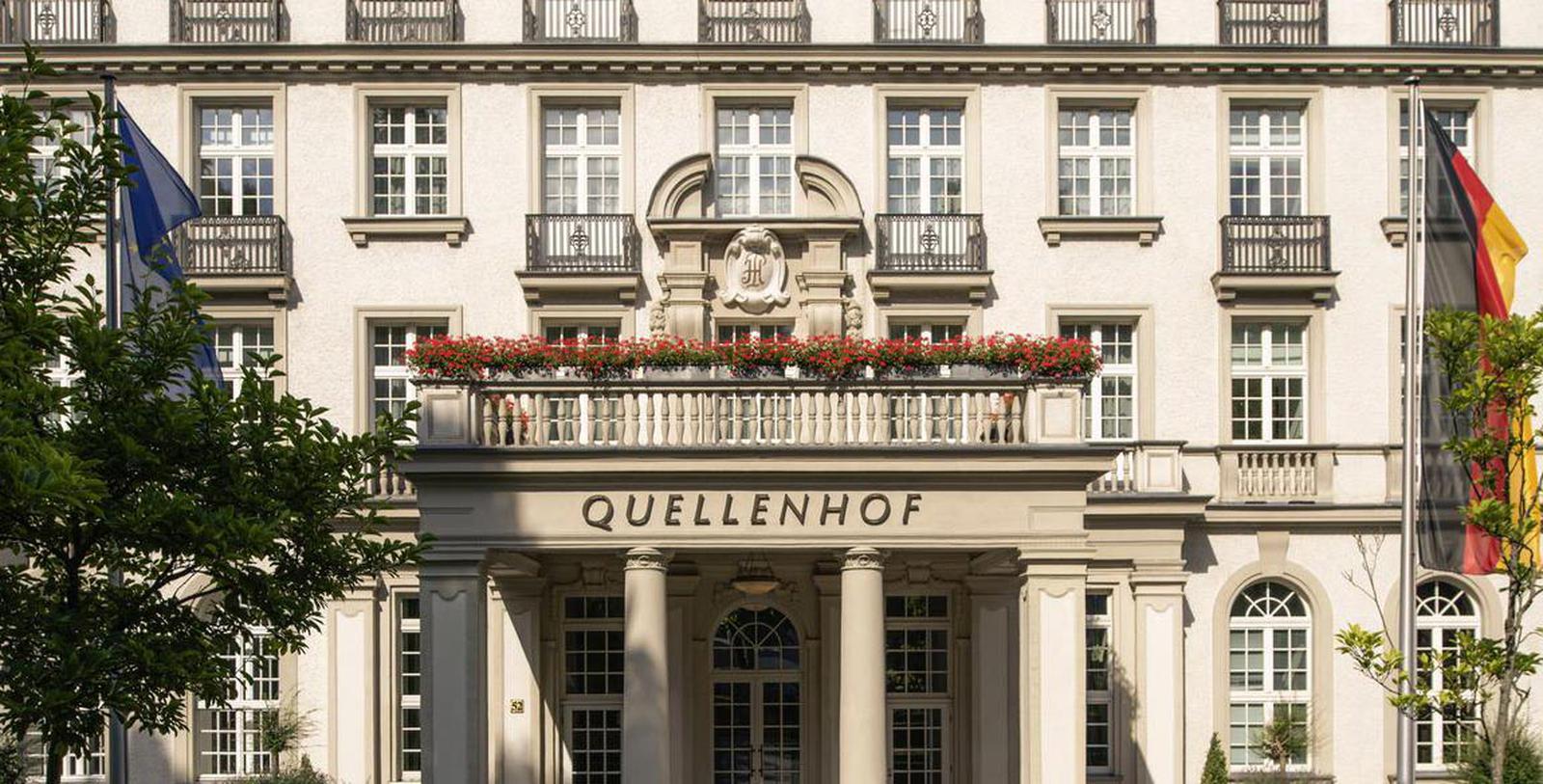Receive for Free - Discover & Explore eNewsletter monthly with advance notice of special offers, packages, and insider savings from 10% - 30% off Best Available Rates at selected hotels.
history
Discover the Hotel Pullman Aachen Quellenhof, which has been a cherished local landmark since it first opened over a century ago.
In the early 20th century, the City Council of Aachen decided to revive the community’s historic identity as a revered holiday destination. Its members specifically sought to resurrect the luxurious spa facilities that once defined the area for generations. After much deliberation, the council resolved to develop a new entertainment district within a preexisting park known as the “Stadtgarten.” Anchoring this magnificent location would be an ornate hotel and spa that utilized water from the city’s underground thermal springs. The City Council of Aachen thus analyzed a variety of designs for the development of the prospective hotel complex starting in 1913. After several months, the council members eventually chose the blueprints submitted by Karl Stöhr and Theodor Fischer. Both men had designed a stunning four-story compound that faced the busy Monheimsallee highway. Three wings ran the length of the building, which was meant to house the entire spa and the hotel’s upscale guestrooms. Gorgeous Neoclassical motifs constituted the structure’s overall appearance, such as a variety of symmetrically placed rectangular windows and a beautiful portico. The presence of classically inspired architecture continued inside the building, too, namely within the hotel’s main lobby. Grand columns extended high in the space to support a partially gilded stucco ceiling, while a balustraded staircase ascended to the floors above.
Construction began on the former site of the Stadtgarten’s vacated Maria Hilf Hospital a year later. However, the outbreak of World War I seriously undermined the project, as the conflict siphoned a significant number of resources. The City Council of Aachen nonetheless managed to keep the work going forward, with construction finally concluding in 1916. A grand opening then commenced that June, which formally opened the building as the “Palast-Hotel Quellenhof.” Many illustrious guests were in attendance, including the Prussian Minister of Agriculture, Clemens Freiherr von Schorlemer-Lieser. The hotel quickly developed a renowned reputation for its incredible services and unrivaled hospitality, especially once the fighting in Europe had stopped. The popularity of the business even enabled the hotel management team to expand upon the facilities considerably, culminating with the debut of a massive thermal swimming pool in 1936. (The largest structure of its kind in the world at the time, the pool was widely celebrated as an engineering marvel!) But this prosperity abruptly ended when World War II erupted not long thereafter. Largely escaping exposure to the conflict, the Palast-Hotel Quellenhof was finally caught in the crossfire during the Battle of Aachen in 1944. In fact, American soldiers had even stormed the facility to force out a German command post that had briefly established its headquarters on-site.
Heavily affected by the fighting, it took many years for the Palast-Hotel Quellenhof to recover. Operations gradually resumed, beginning with the reopening of a mere four guestrooms after the war. Architects continued to work throughout the building over the next two decades, eventually restoring the hotel back to its former glory in 1966. Now fully revitalized, the Palast-Hotel Quellenhof soon returned to being one of Aachen’s best destinations. Nevertheless, Aachen city officials decided to sell the historic hotel to the Kölner Fundus Gruppe in 1995, known currently as the “DI-Gruppe.” Investing some $50 million, the company proceeded to launch a two-year-long renovation that thoroughly preserved the building’s architectural integrity. Perhaps the greatest work the restoration accomplished was the refurbishment of the original stucco encasing the exterior façade. Further construction then commenced in 2001, which installed modern conference rooms and additional wellness amenities. Known as the “Parkhotel Quellenhof Aachen” today, this fantastic historic hotel continues to enchant countless guests every year. Contemporary cultural heritage travelers in particular have enjoyed its luxurious ambiance and fascinating institutional heritage, as well as its proximity to many celebrated local historic landmarks.
-
About the Architecture +
During the early 1900s, the City Council of Aachen decided to revitalize the city's spa life by constructing a spa district, including a hotel and treatment center. The City Council collected designs for the grounds, hotel, and spa from many different architects, finally choosing a three-winged complex designed by Karl Stöhr, a German architect. Stöhr's neoclassical design style can be identified by the hotel's simple grandeur, arched windows, and geometric lines.
-
Famous Historic Guests +
Prince Bernhard of the Netherlands (1948 – 1980) King Juan Carols of Spain (1975 – 2014) Prime Minister Winston Churchill of the United Kingdom (1940 – 1945; 1951 – 1955)

























